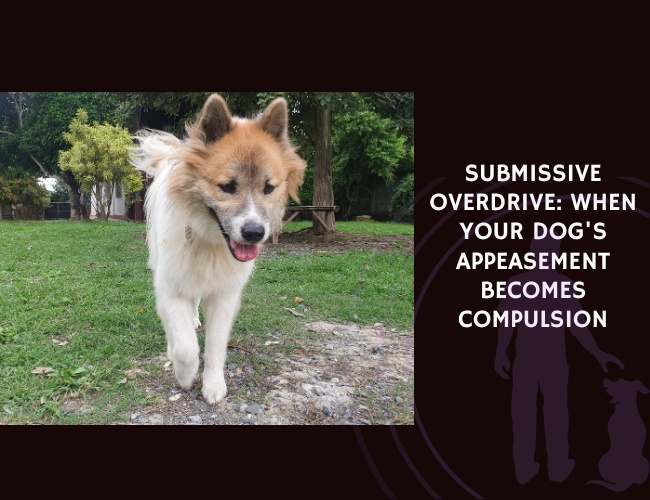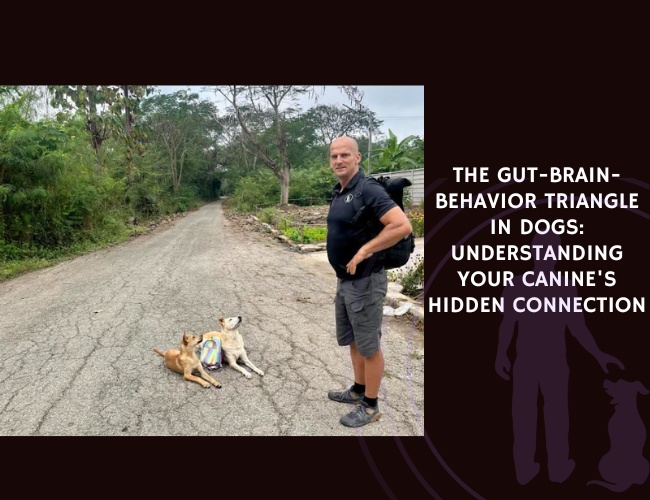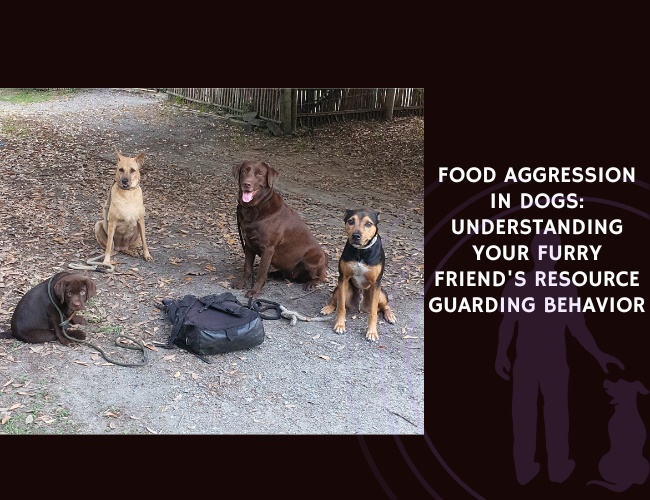Have you ever noticed your furry friend constantly lowering their head, licking their lips, or rolling over to show their belly—even when there’s no apparent threat? While submission is a natural part of canine communication, there’s a critical difference between healthy social signals and compulsive appeasement that stems from deeper emotional distress. Let us guide you through understanding this complex behavioral pattern that affects countless dogs, yet often goes unrecognized by even the most loving owners.
Understanding Submissive Overdrive
What Normal Submission Looks Like
In the canine world, appeasement behaviors serve as social lubricants—they’re the equivalent of saying “I come in peace” or “let’s keep things friendly.” A well-adjusted dog might briefly lick their lips when meeting a new dog, lower their body slightly when greeting an excited child, or turn their head away to de-escalate a tense moment. These behaviors are context-specific, proportionate, and flexible.
You might notice your dog offering these signals during specific situations: when approaching another dog at the park, when you come home after they’ve gotten into the garbage, or when meeting new people. The key here is that these behaviors are adaptive—they serve a purpose, achieve their goal, and then the dog returns to a relaxed state.
When Appeasement Crosses the Line
Compulsive appeasement, however, tells a different story. This is when submissive behaviors become excessive, repetitive, and disconnected from the actual social context. Dogs experiencing submissive overdrive might constantly display appeasement signals even in safe, familiar environments. They’re stuck in a loop of trying to prevent conflicts that aren’t actually happening.
The distinction lies not just in frequency but in the dog’s overall emotional state. While functional submission is a flexible social strategy that dogs can turn on and off as needed, stress-driven submission becomes rigid and inflexible—a sign of emotional shutdown. These dogs aren’t choosing to be submissive; they’re trapped in a pattern of behavior that no longer serves them. 🧡
The Hidden Impact of Misunderstanding
When we mistake compulsive appeasement for “good behavior” or compliance, we inadvertently reinforce our dog’s distress. That constantly submissive dog isn’t necessarily well-trained or naturally gentle—they might be experiencing chronic anxiety, learned helplessness, or the lingering effects of trauma. Understanding this difference is crucial for providing the support our dogs truly need.
Character & Behavior
The Emotional Landscape of Compulsive Appeasement
Dogs experiencing submissive overdrive live in a state of perpetual emotional vigilance. Their world feels unpredictable and potentially threatening, even when objectively safe. This isn’t a character flaw or a training failure—it’s an emotional wound that manifests through behavior.
Behavioral manifestations include:
- Constant lip licking, even in relaxed settings
- Frequent “whale eye” (showing the whites of their eyes)
- Persistent low body posture or crouching
- Excessive yawning in non-tired states
- Inappropriate belly exposure as a default greeting
These dogs often develop what researchers call “behavioral poverty”—a restricted range of behaviors due to chronic stress. Where a confident dog might explore, play, or rest based on their mood and environment, a dog in submissive overdrive has a limited behavioral repertoire dominated by appeasement.
The Freeze-Appease Loop
One particularly concerning pattern is the freeze-appease loop. The dog freezes (becoming very still), then offers appeasement signals, but because the underlying anxiety remains unresolved, they freeze again, creating a cycle. This pattern indicates that the dog’s emotional regulation system is overwhelmed. They’re trying to use their natural conflict-resolution tools, but these tools aren’t working because the conflict is internal, not external.
You might observe this during seemingly benign activities: when you reach for their collar, during grooming, or even during positive interactions like petting. The dog appears to tolerate or even seek out interaction, but their body language tells a story of internal conflict and stress. 🐾
Vocalization & Communication
Understanding How Your Dog “Talks” Through Submission
Dogs experiencing compulsive appeasement often develop unique vocal patterns that differ from typical canine communication. While a confident dog might bark to alert, whine for attention, or growl to set boundaries, dogs in submissive overdrive often suppress their natural vocalizations.
Common vocal patterns include:
- High-pitched, barely audible whimpers
- Suppressed or “swallowed” barks
- Absence of warning signals like growls
- Stress-related vocalizations during sleep
This vocal suppression represents another form of behavioral inhibition. These dogs have learned that expressing themselves—even through natural communication—might lead to negative consequences. The absence of growling is particularly concerning, as it removes an important warning signal that helps prevent escalation to biting.
Silent Stress Signals
The most profound communication from these dogs often comes through silence. They’ve learned that being noticed can be dangerous, so they become masters of invisibility. This learned invisibility extends beyond vocalization to include:
- Minimal movement in the home
- Avoiding areas where family members gather
- “Ghosting” behaviors—seeming to disappear when stressed
- Hyper-awareness of human movement and mood
Understanding these silent communications requires us to become fluent in reading subtle body language and recognizing what’s not there as much as what is. A dog who never asks for anything—not play, not food, not attention—isn’t necessarily “easy” or “independent.” They might be emotionally shut down.

Training & Education
The Trauma-Informed Approach
Traditional training methods often fail dogs experiencing compulsive appeasement because they don’t address the underlying emotional state. In fact, conventional obedience training can worsen the condition by adding more pressure to an already overwhelmed system. These dogs don’t need more commands—they need emotional rehabilitation.
Key principles of trauma-informed training:
- Choice and agency: Allowing the dog to make decisions
- Predictability: Creating consistent, safe routines
- Positive emotional associations: Building confidence through play
- Respect for boundaries: Never forcing interaction
The goal isn’t to train behaviors but to rebuild emotional resilience. This means celebrating small victories like a tail wag, a play bow, or even a refused treat—because refusal indicates the dog feels safe enough to say “no.”
Building Confidence Through Choice
Agency-based rehabilitation focuses on empowering dogs to make choices. This might seem counterintuitive when dealing with a dog who seems paralyzed by options, but controlled choice-making is therapeutic. Start with simple decisions:
- Which toy to play with
- Which direction to walk
- Whether to approach or retreat
- When to end an interaction
Each successful choice builds neural pathways associated with control and safety. Over time, these small decisions accumulate into greater behavioral flexibility and emotional resilience. Remember: a dog who chooses to disobey a cue is showing more emotional health than one who compulsively complies out of fear.
Recognizing Progress
Progress in addressing compulsive appeasement often looks different from traditional training success. Instead of looking for perfect sits and stays, watch for:
- Increased behavioral variety
- Moments of stillness without tension
- Spontaneous play behaviors
- Appropriate boundary-setting (like moving away)
- Genuine relaxation postures
These signs indicate that your dog is beginning to feel safe enough to express their authentic self rather than constantly managing perceived threats. 🧡
Performance & Activities
Reintroducing Joy Through Movement
Dogs stuck in compulsive appeasement patterns often lose their natural joy in movement and play. Their bodies, constantly braced for conflict, forget how to relax into natural canine activities. Reintroducing performance and activities requires patience and sensitivity to their emotional state.
Start with low-pressure activities:
- Sniffing games (highly calming and choice-driven)
- Gentle food puzzles
- Short, voluntary training sessions using shaping
- Parallel walking with calm dogs
- Solo exploration in secure spaces
The key is to avoid any activity that increases stress or requires compliance. Traditional dog sports or group classes might be too overwhelming initially. Instead, focus on activities that allow the dog to set the pace and intensity.
The Therapeutic Power of Play
Play is particularly therapeutic for dogs recovering from chronic stress, but dogs in submissive overdrive often need to relearn how to play. They might not understand that it’s safe to grab a toy, chase a ball, or engage in mock wrestling. Play therapy should be:
- Initiated by the dog
- Free from commands or structure
- Allowed to end when the dog chooses
- Celebrated even in tiny moments (a play bow, a toy touch)
Some dogs rediscover play through solitary activities first—tossing a toy for themselves or engaging in zoomies when alone. This is healthy progress and shouldn’t be interrupted with human participation until the dog invites it.
Soft Eyes. Silent Voice. Shaking Soul.
Appeasement is not always peace—it can be pain.
When a dog constantly lowers their head, rolls over, or avoids eye contact, it’s often misread as calm or compliant. But true submission is flexible and context-aware. Compulsive appeasement, on the other hand, is rigid. It’s not a choice—it’s a compulsion born from fear. A desperate strategy to stay invisible in a world that once punished their presence.
Quiet dogs often carry the loudest pain.
A dog who never growls, never barks, never asks, may not be “easy”—they may be exhausted. Chronic stress silences expression, flattens curiosity, and replaces confidence with caution. These dogs freeze and appease on autopilot. And what looks like “obedience” is often a sign of shutdown.
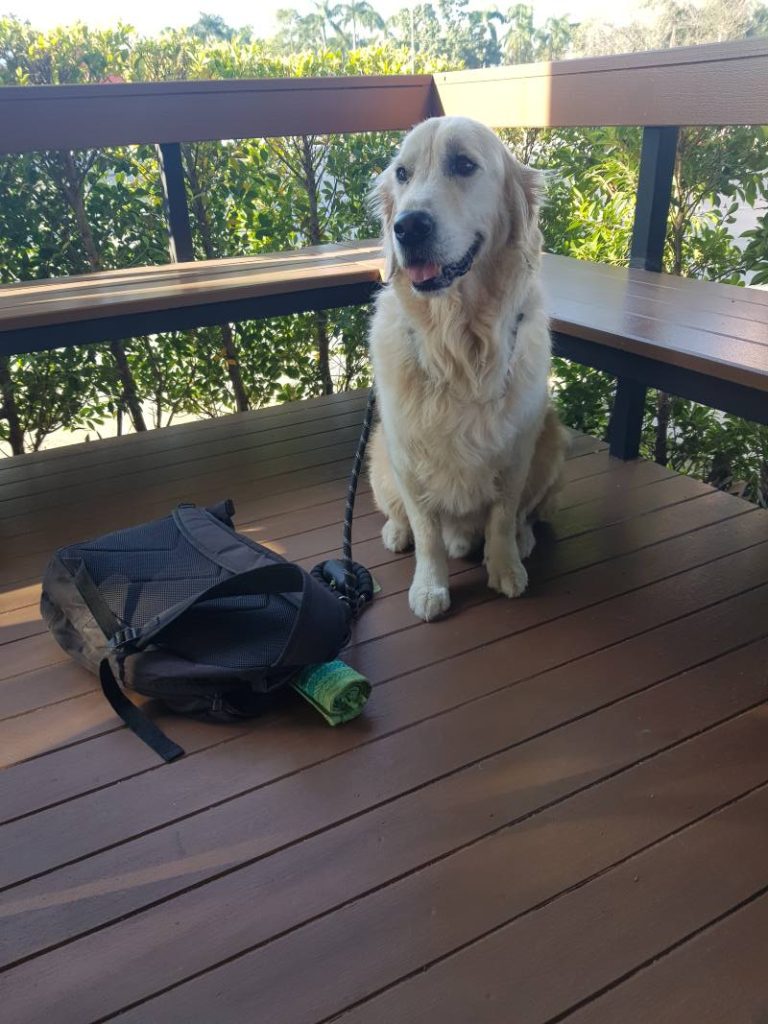
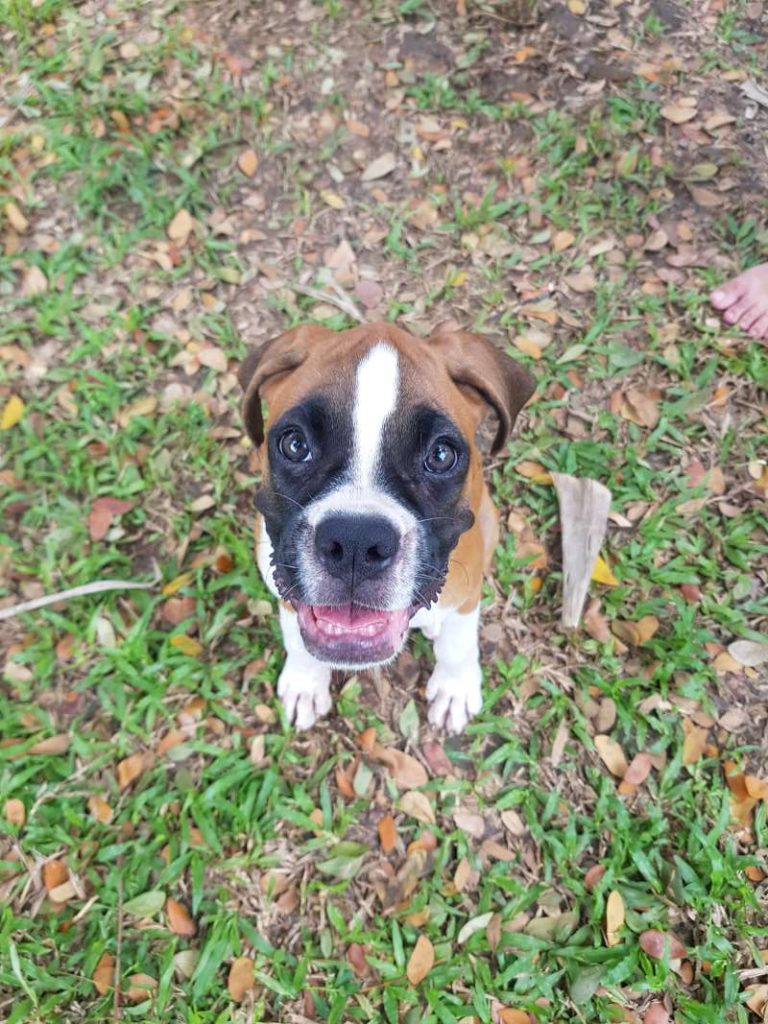
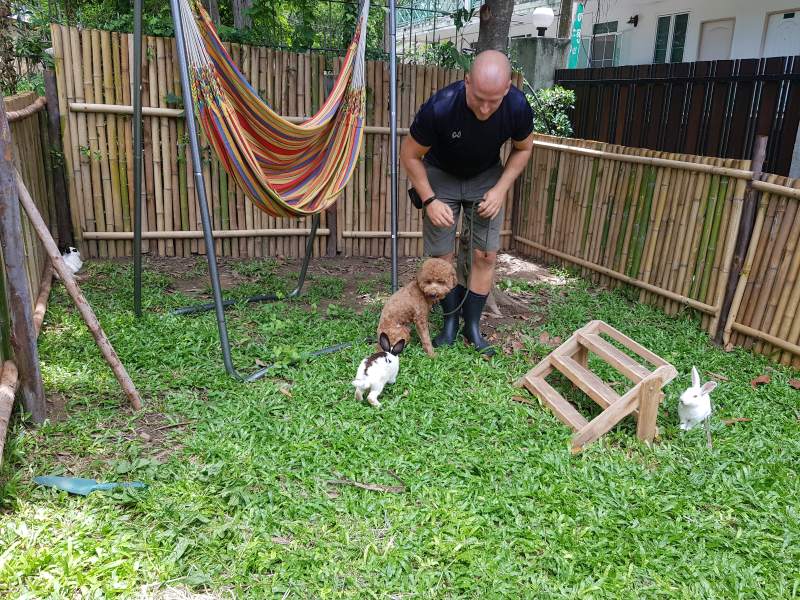
Real healing begins when they say no.
Progress isn’t a perfect heel or sit. It’s the first time your dog hesitates, resists, walks away—or chooses play. It’s when they feel safe enough to express, to question, to live. Helping a compulsively submissive dog isn’t about fixing behavior. It’s about inviting their spirit back. 🧡
Nutritional Recommendations
The Stress-Nutrition Connection
Chronic stress significantly impacts a dog’s nutritional needs and digestive health. Dogs experiencing compulsive appeasement often show:
- Decreased appetite or stress-related anorexia
- Digestive issues (chronic diarrhea or constipation)
- Poor nutrient absorption
- Weight loss or inability to maintain healthy weight
The constant cortisol elevation associated with chronic stress affects metabolism, immune function, and gut health. This creates a cycle where poor nutrition further compromises the dog’s ability to cope with stress.
Nutritional strategies for stressed dogs:
- Consistent feeding schedules (predictability reduces anxiety)
- High-quality, easily digestible proteins
- Omega-3 fatty acids for brain health
- Probiotics to support gut-brain axis
- Multiple small meals rather than large portions
Creating Positive Food Associations
For many dogs with compulsive appeasement, mealtimes have become another source of stress. They might eat too quickly (resource guarding from past experiences), refuse food (learned helplessness), or show extreme appeasement around food bowls. Creating positive food associations requires:
- Peaceful, private eating spaces
- No competition from other pets
- Allowing food refusal without consequence
- Using food in enrichment activities
- Avoiding hand-feeding if it increases stress
Some dogs benefit from grazing-style feeding initially, where food is available throughout the day, removing the pressure of scheduled mealtimes. As stress decreases, appetite and eating patterns typically normalize. 🐾
Health Concerns
The Physical Toll of Chronic Stress
Compulsive appeasement isn’t just a behavioral issue—it has profound physical health implications. The constant activation of stress response systems creates a cascade of health problems that can significantly impact quality of life and longevity.
Common health issues include:
- Compromised immune function (frequent infections)
- Gastrointestinal problems (IBD, chronic diarrhea)
- Skin conditions (stress-related alopecia, hot spots)
- Musculoskeletal tension and pain
- Dental issues from chronic lip licking
The HPA (hypothalamic-pituitary-adrenal) axis dysregulation seen in these dogs mirrors what we see in humans with chronic stress disorders. Cortisol, meant to be a short-term stress hormone, becomes chronically elevated, leading to systemic inflammation and organ stress.
Neurological Considerations
From a neurological perspective, chronic compulsive appeasement involves several brain systems:
Amygdala hyperactivity: The fear center of the brain becomes oversensitive, triggering stress responses to neutral stimuli. This hypervigilance exhausts the nervous system and prevents normal rest and recovery.
Hippocampal atrophy: Chronic stress can actually shrink the hippocampus, affecting memory and learning. This explains why stressed dogs often struggle with training—their brains are literally less capable of forming new associations.
Dopamine suppression: The reward system becomes dysregulated, leading to anhedonia (inability to feel pleasure). This explains why stressed dogs often lose interest in previously enjoyed activities.
Understanding these neurological changes helps us appreciate that recovery takes time—we’re not just changing behaviors, we’re supporting brain healing.
Working with Your Veterinary Team
A comprehensive health assessment is crucial for dogs showing compulsive appeasement. Your veterinary team should evaluate:
- Thyroid function (hypothyroidism can worsen anxiety)
- Cortisol levels (through saliva or urine testing)
- Nutritional status and absorption
- Pain assessment (chronic pain often underlies behavioral changes)
- Medication options for severe cases
Some dogs benefit from pharmaceutical support during recovery. Anti-anxiety medications can provide a window of reduced stress during which behavioral interventions are more effective. This isn’t “drugging” the dog—it’s providing medical support for a medical condition.

Lifestyle & Environment
Creating a Healing Space
The home environment plays a crucial role in recovery from compulsive appeasement. Dogs experiencing this condition need spaces that promote safety, predictability, and choice. This goes beyond basic comfort to creating an environment that actively supports emotional healing.
Environmental modifications include:
- Multiple safe spaces where the dog can retreat
- Predictable household routines
- Minimizing sudden movements or loud noises
- Clear pathways for escape/retreat
- Separate resources to prevent competition
Consider your dog’s sensory experience. Chronic stress heightens sensory sensitivity, so seemingly minor stimuli can be overwhelming. Soft lighting, calm acoustic environments, and even specific scents (like lavender or chamomile) can support relaxation.
The Human Factor
Perhaps the most critical environmental factor is human behavior. Dogs with compulsive appeasement are often exquisitely sensitive to human emotions and movements. Family members need to:
- Move slowly and predictably around the dog
- Avoid direct approach or prolonged eye contact
- Respect the dog’s space bubbles
- Recognize that affection can be stressful
- Celebrate distance as a healthy choice
This might feel counterintuitive—don’t we want our dogs to be close to us? But for a dog recovering from chronic stress, the ability to choose distance is empowering. A dog who chooses to be across the room is healthier than one who compulsively seeks proximity out of anxiety.
Routine as Medicine
Predictability is therapeutic for stressed dogs. While variety is the spice of life for confident dogs, those with compulsive appeasement benefit from routine:
- Consistent wake/sleep times
- Regular meal schedules
- Predictable walk routes and times
- Structured quiet times
- Consistent handling by familiar people
As the dog’s confidence grows, you can gradually introduce controlled novelty. But in the early stages of recovery, boring is beautiful. 🧡
Senior Care
Age-Related Considerations
Senior dogs with histories of compulsive appeasement face unique challenges. The natural aging process can exacerbate anxiety, while cognitive decline might worsen existing patterns. However, senior dogs also show remarkable resilience and can make significant progress even late in life.
Special considerations for senior dogs:
- Increased need for routine and predictability
- Pain management (arthritis can worsen anxiety)
- Cognitive support through enrichment
- Adjusted expectations for behavior change
- Focus on comfort over “fixing”
Senior dogs might develop new appeasement behaviors related to confusion or sensory decline. Distinguishing between age-related changes and stress-related behaviors requires careful observation and veterinary consultation.
Quality of Life Focus
For senior dogs, the goal shifts from complete behavioral resolution to optimizing quality of life. This means:
- Prioritizing comfort over compliance
- Accepting limitations while celebrating small improvements
- Providing extra environmental support
- Considering palliative anxiety management
- Honoring the dog’s preferences, even if unconventional
Some senior dogs with compulsive appeasement histories find peace in their golden years as their humans finally understand their needs. The gift of being truly seen and accommodated can bring profound healing, even if behavioral patterns remain.
Understanding the Deeper Patterns
Early Life Experiences
The roots of compulsive appeasement often trace back to early puppyhood. Critical socialization windows between 3-14 weeks profoundly shape a dog’s emotional resilience. Negative experiences during this time can create lasting neurological imprints:
Common early triggers:
- Premature separation from littermates
- Harsh correction-based training
- Overwhelming socialization experiences
- Lack of appropriate dog-dog interaction
- Trauma or neglect
Understanding these origins isn’t about blame—many dogs with difficult starts come from well-meaning situations. Rather, it helps us appreciate the depth of the healing required and adjust our expectations accordingly.
The Role of Genetics
While environment plays a crucial role, genetics also influence stress sensitivity. Some breeds and individual dogs are naturally more sensitive to environmental stressors. This isn’t a flaw—in nature, heightened sensitivity can be adaptive. But in domestic environments, these sensitive dogs need extra support.
Genetic predisposition means:
- Some dogs need lifelong management
- Progress might be slower but is still valuable
- Medication might be particularly helpful
- Environmental management is crucial
- Small improvements make big differences
Breaking Intergenerational Patterns
Interestingly, stressed mothers often produce stressed puppies through both genetic and epigenetic mechanisms. Chronic stress during pregnancy affects fetal development, potentially creating puppies predisposed to anxiety. This highlights the importance of:
- Supporting pregnant dogs‘ emotional health
- Early intervention for at-risk puppies
- Careful breeding decisions
- Trauma-informed puppy raising
- Breaking cycles through understanding
The Path Forward
Recognizing Hidden Suffering
One of the greatest challenges in addressing compulsive appeasement is recognition. These dogs often appear “good” or “easy,” flying under the radar of concern. Learning to see past compliance to recognize suffering is a skill that requires:
- Education about stress signals
- Willingness to question “good” behavior
- Understanding that calmness isn’t always healthy
- Recognizing shutdown versus relaxation
- Accepting that your “easy” dog might be struggling
Building Resilience Together
Recovery from compulsive appeasement is a journey, not a destination. It requires patience, understanding, and often a complete reimagining of what successful dog ownership looks like. Progress might include:
- Your dog refusing a command for the first time
- Showing mild resource guarding (healthy boundary setting)
- Expressing preferences about handling
- Choosing to play alone
- Developing selective social relationships
These behaviors, which might concern traditional trainers, actually indicate emotional healing. Your dog is learning that they have a voice and that using it is safe.
Creating Lasting Change
Sustainable recovery requires systemic change in how we understand and interact with our dogs:
For individual owners:
- Educate yourself about trauma-informed approaches
- Work with qualified professionals who understand emotional health
- Adjust expectations and celebrate small victories
- Create support networks with understanding community
- Document progress to see gradual changes
For the broader community:
- Advocate for force-free training methods
- Share knowledge about stress signals
- Support research into canine emotional health
- Challenge misconceptions about “good” behavior
- Create safe spaces for sensitive dogs
Conclusion: Is This Understanding Right for You?
If you’ve recognized your dog in these descriptions, you might feel overwhelmed, guilty, or even skeptical. These feelings are normal and valid. Discovering that your “good” dog has been suffering can be heartbreaking. But knowledge is power, and understanding is the first step toward healing.
Ask yourself:
- Am I willing to see my dog’s behavior differently?
- Can I prioritize emotional health over traditional obedience?
- Do I have patience for a slow recovery process?
- Can I celebrate unconventional progress?
- Am I ready to be my dog’s advocate?
If you answered yes, you’re ready to begin this journey. Your dog doesn’t need perfection—they need understanding, patience, and a human willing to see beyond compliance to the soul underneath. The path forward isn’t always clear, but every step taken with compassion brings healing.
Remember: your dog’s submissive overdrive developed as a survival strategy. With your support, they can learn new ways of being in the world—ways that include joy, choice, and authentic self-expression. That transformation is worth every patient moment, every adjusted expectation, and every small victory along the way.
Did you know that dogs who recover from compulsive appeasement often become the most deeply bonded, trusting companions? When a dog learns they’re truly safe, the relationship that emerges is profound. You’re not just addressing a behavioral issue—you’re opening the door to a connection based on mutual trust and understanding. That’s the gift waiting on the other side of this journey. 🧡🐾

